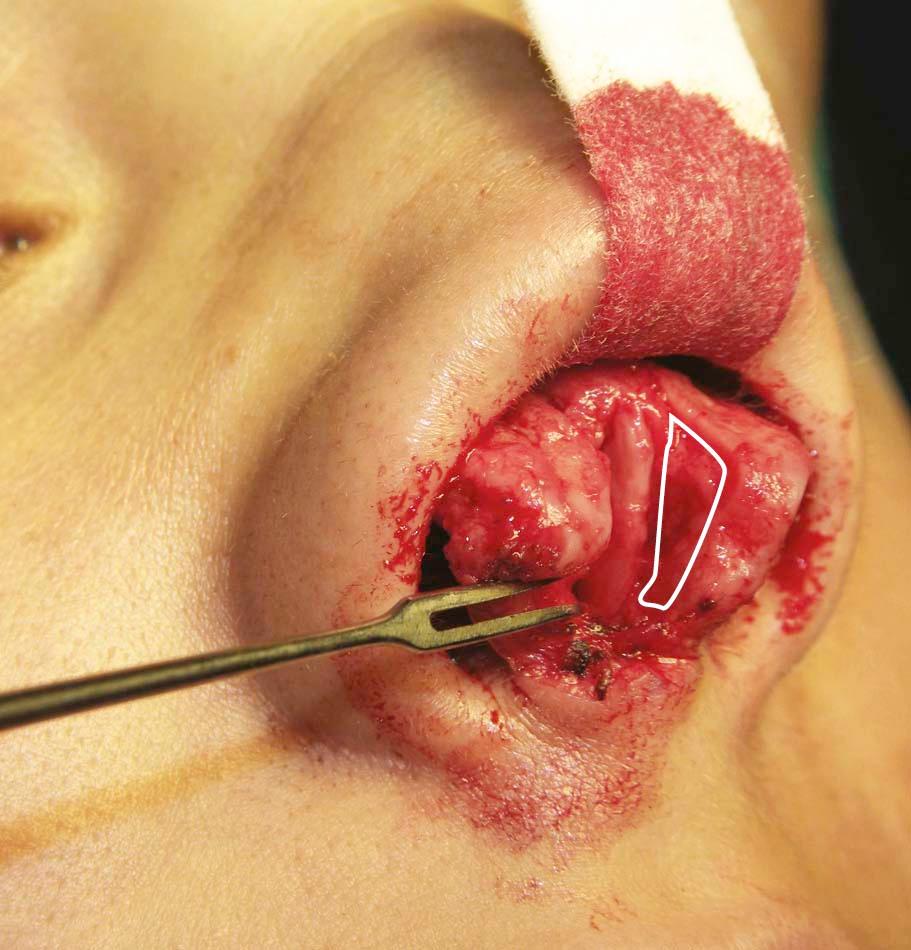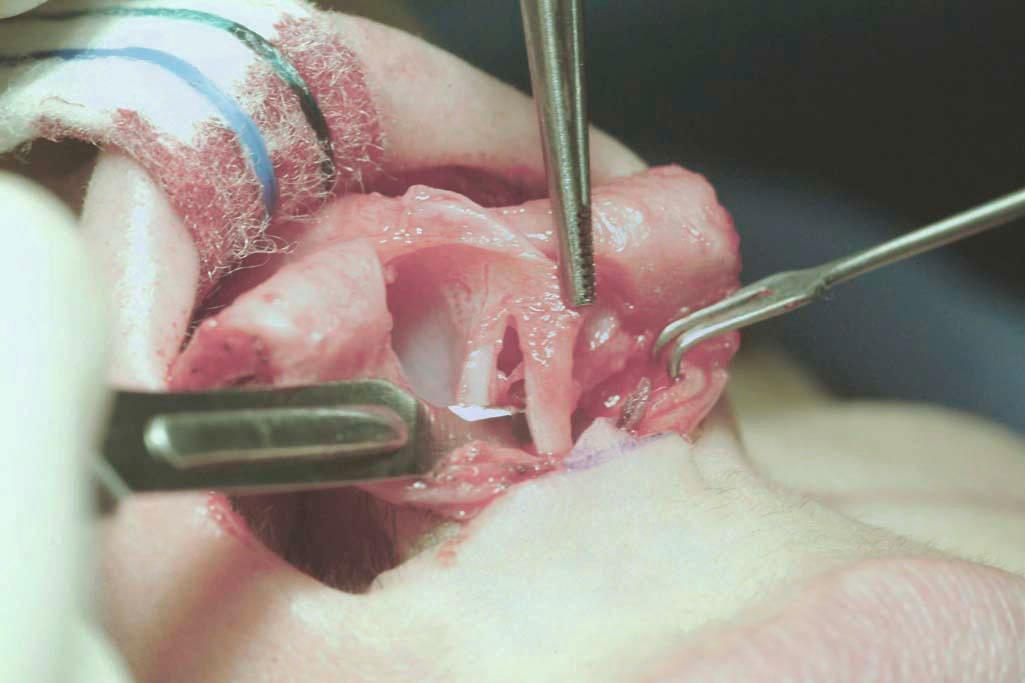Physical Address
304 North Cardinal St.
Dorchester Center, MA 02124
One of the most important and difficult aspects of rhinoplasty surgery is creating a nicely shaped, natural-appearing nasal tip. This generally involves altering nasal tip definition, width, projection, and/or rotation. Nasal tip appearance is primarily determined by the shape and strength of the lower lateral cartilages (LLCs). In addition, the tip shape and position are affected by the relationship of the LLCs with adjacent support structures (i.e., septum and upper lateral cartilages [ULCs]) and the characteristics of the overlying skin envelope. Changing nasal tip appearance is usually accomplished by modifying the shape or configuration of the LLCs to create a new tip structure. Reshaping the cartilages requires both maneuvers to release the tip's support mechanisms creating a mobile structure, followed by reconstructive maneuvers to establish a cartilaginous foundation that will translate into a structurally sound and aesthetically pleasing appearance. Many techniques have been described to accomplish these changes. The ideal technique for modifying the LLCs should be flexible enough to address a variety of issues, as well as provide predictable and lasting results. The central component of our preferred technique for modifying the nasal tip is vertical angle division of the LLCs to create a “mobile tripod.” This separates the lateral crura from the medial and intermediate crura, creating a structure that is more amenable to reshaping as seen in this patient ( Figure 13-1 ).
A description of this technique, and an explanation of its rationale, must be prefaced with a description of the anatomy and relevant terminology. The LLCs consist of a lateral crus, a medial crus, and the variable presence of an intermediate crus between these two. The angle of the LLC is the junction of the medial (or intermediate) crura and lateral crura ( Figure 13-2 ). The dome of the LLC is generally the most prominent portion of the lateral crus, and is located lateral to the angle. The major and minor tip support mechanisms have been reviewed previously in the text. Some of these structural relationships must be released in order to modify nasal tip shape, appearance, projection, and rotation.
Anderson's tripod concept provides a simplified explanation of how alterations to the crural components of the LLCs change the external nasal appearance. This relies on conceptualizing the LLCs as a tripod in which the combined medial-intermediate crura comprise a single inferior limb and each lateral crura comprises the remaining two limbs ( Figure 13-3 ). Altering any one limb of the tripod will affect the position of the lower third of the nose, whether through a change in its projection, rotation, or length. Practical implementation of these concepts may be more challenging as the intact crural arch resists many of the desired changes to the tripod. In the technique described in this chapter, vertical angle division is the centerpiece to developing a “mobile tripod” by removing the forces resisting alar restructuring.
Three key steps isolate the limbs of the “mobile tripod” for subsequent manipulation: (1) releasing the membranous septal attachment between the medial crura and caudal septum; (2) vertical angle division, separating medial (and intermediate) crura from lateral crura; and (3) freeing the cephalic margin of the lateral crura from the ULCs. These steps allow for the individual limbs of the tripod to be modified and repositioned independent of one another. Having released structural supports to facilitate changes to the LLCs, an emphasis must be placed on reestablishing a solid structural foundation to provide a durable result.
The distinction between vertical angle division and traditional dome division technique cannot be emphasized enough. Dome division involves transecting the LLC at the domal portion of the lateral crura; similar to performing a lateral crural steal, with the medial post consisting of the medial, intermediate, and a portion of the lateral crus ( Figure 13-4 ). The resulting tip structure is defined by the apex of the medial post with the lateral crura remnants collapsing to its side. The most common problems associated with this technique were tent pole deformities, due to a narrow pointed medial post defining the tip, and alar collapse, due to inadequate support of the lateral crura remnant. In contrast, vertical angle division transects the LLC at the angle, the natural junction between medial-intermediate crura and lateral crura. The entire lateral crura remain intact. The tip structure is created by the contoured medial edge of the lateral crura overriding the slightly splayed medial-intermediate crural complex ( Figure 13-5 ). This produces a more natural and attractive nasal tip appearance and avoids the problems associated with dome division.
All cases are performed through an open/external rhinoplasty approach using an inverted-V columellar incision. A relatively consistent sequence of steps is adhered to in this technique, as outlined next.
Skin flap elevation
Separate medial crura and identify caudal septum
Septal mucoperichondrial flap elevation
Septal shortening (as needed)
Septal cartilage harvest
Closure of septal mucosal flaps
Elevate vestibular mucosa from under the angle
Vertical angle division
Medial crura sutured together
Mucosal elevation under cephalic margin of lateral crura and separation of lateral crura from ULC (scroll)
When additional rotation is needed—release and transaction of the lateral tail of the lateral crura
Cephalic trim of lateral crura
Graft creation (columella strut) from septal cartilage
Placement and suture fixation of columella strut in an intracrural premaxillary pocket
Medial (and intermediate) crural modification—height and shape
Membranous septal sutures (as needed)
Extended shield graft (if needed)
Dorsal modifications
The caudal septal cartilage is attached to the LLC through the membranous septum. By virtue of this relationship the caudal septum affects nasal tip projection, length, and rotation. The external anterior approach to harvesting septal cartilage requires separation of the medial crura and taking down the membranous septum ( Figure 13-6 ). Releasing this attachment deprojects, shortens, and rotates the nasal tip. Even when these are not the primary goals for a particular patient, this release will also facilitate subsequent efforts to lengthen, counterotate, and/or project the nasal tip freely.

Following the takedown of the membranous septum and elevation of the septal mucosal flaps, caudal septal length is evaluated to determine the need for septal shortening ( Figure 13-7 ). An excessively long septum may interfere with efforts to rotate or shorten the nasal tip impairing free mobilization of the LLC. Septal length is also assessed to ensure adequate room to place a columella strut graft without changing nasal length. After addressing caudal septal length, the septal cartilage is harvested and the mucoperichondrial flaps are sutured together using a quilting suture technique.

Become a Clinical Tree membership for Full access and enjoy Unlimited articles
If you are a member. Log in here